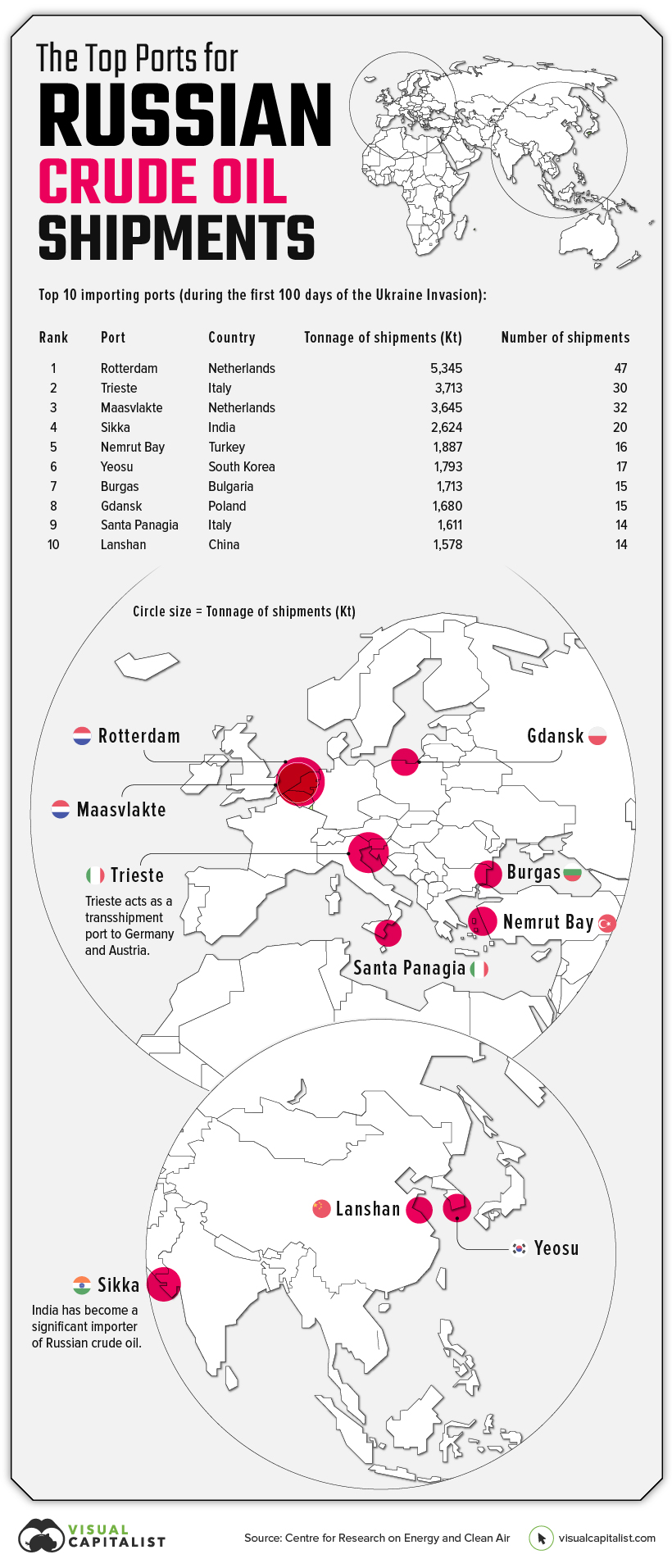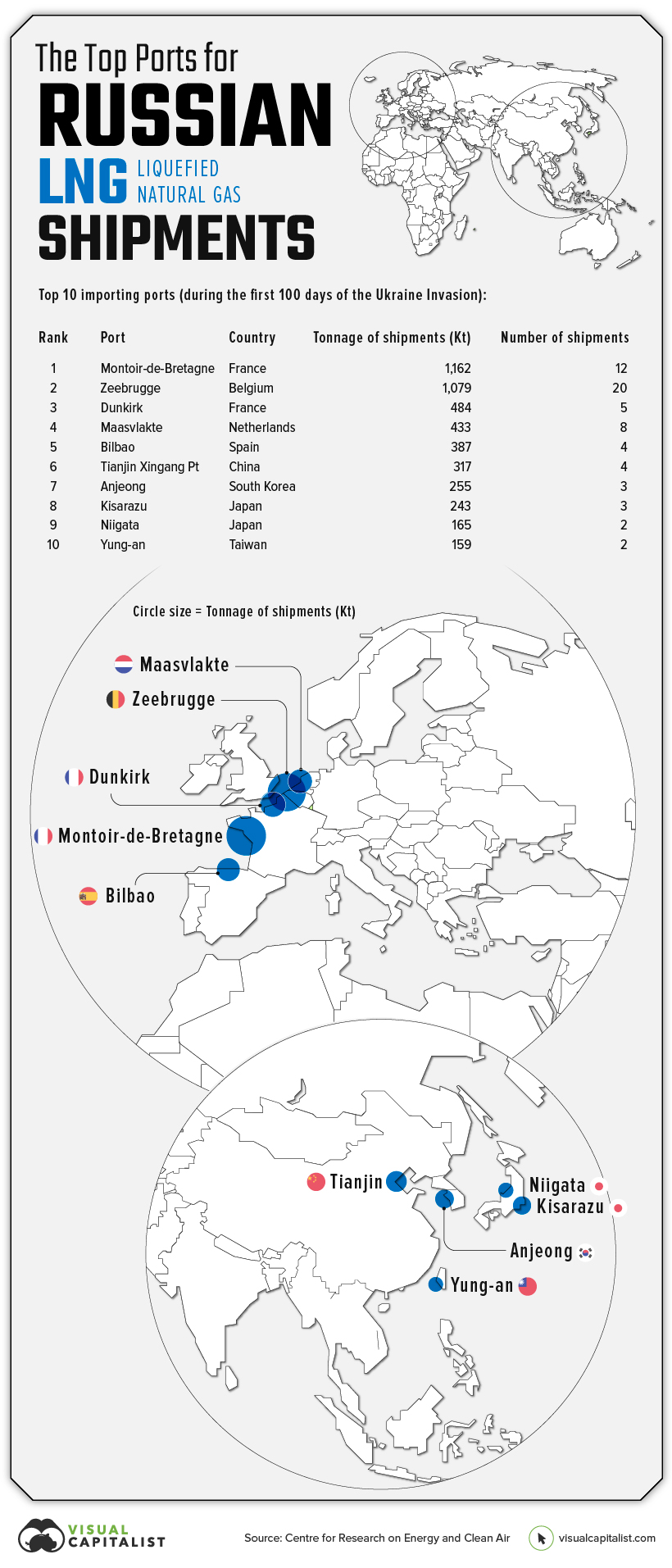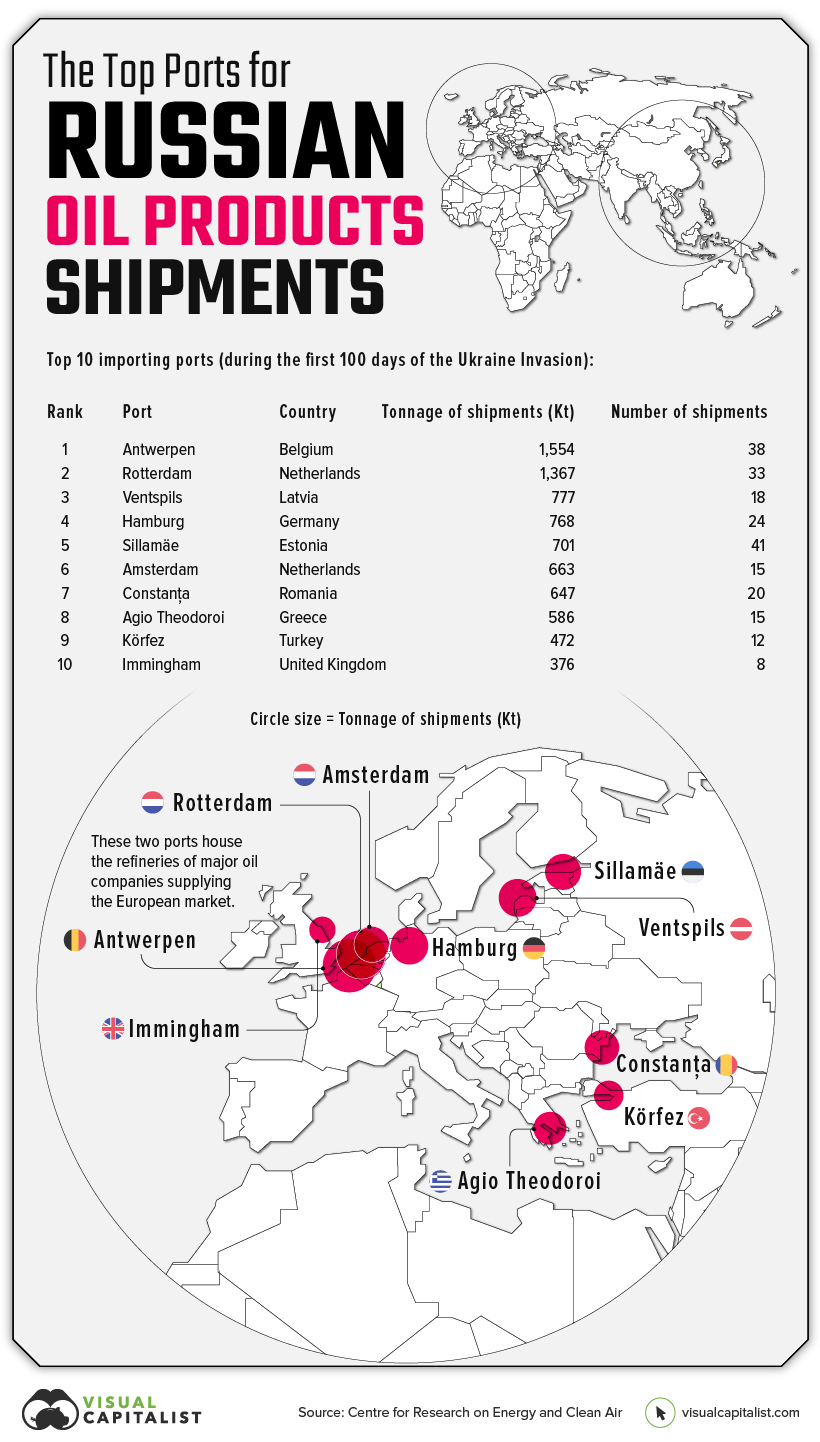
As the invasion of Ukraine wears on, European countries are scrambling to find alternatives to Russian fossil fuels.
In fact, an estimated 93% of Russian oil sales to the EU are due to be eliminated by the end of the year, and many countries have seen their imports of Russian gas plummet. Despite this, Russia earned €93 billion in revenue from fossil fuel exports in the first 100 days of the invasion.
While the bulk of fossil fuels travel through Europe via pipelines, there are still a number marine shipments moving between ports. The maps below, using data from MarineTraffic.com and Datalastic, compiled by the Centre for Research on Energy and Clean Air (CREA), are a look at Russia’s fossil fuel shipments during the first 100 days of the invasion.
Russia’s Crude Oil Shipments
Much of Russia’s marine shipments of crude oil went to the Netherlands and Italy, but crude was also shipped as far away as India and South Korea.
India became a significant importer of Russian crude oil, buying 18% of the country’s exports.
It’s important to note that a broad mix of companies were involved in shipping this oil, with some of the companies tapering their trade activity with Russia over time. Even as shipments begin to shift away from Europe though, European tankers are still doing the majority of the shipping.
Russia’s Liquefied Natural Gas Shipments
Unlike the gas that flows along the many pipeline routes traversing Europe, liquefied natural gas (LNG) is cooled down to a liquid form for ease and safety of transport by sea. Below, we can see that shipments went to a variety of destinations in Europe and Asia.

Fluxys terminals in France and Belgium stand out as the main destinations for Russian LNG deliveries.
Russia’s Oil Product Shipments
For crude oil tankers and LNG tankers, the type of cargo is known. For this dataset, CREA assumed that oil products tankers and oil/chemical tankers were carrying oil products.

Huge ports in Rotterdam and Antwerp, which house major refineries, were the destination for many of these oil products. Some shipments also went to destinations around the Mediterranean as well.
All of the top ports in this category were located within the vicinity of Europe.
The post Mapped: Which Ports are Receiving the Most Russian Fossil Fuel Shipments? appeared first on Visual Capitalist.